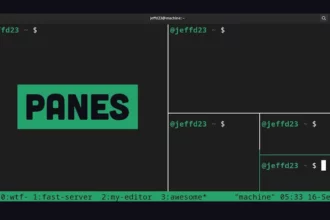Are you ready to take your neural networks to the next level? Look no further than ensemble neural networks! In this blog post, we will unravel the mysteries of this powerful technique and show you how it can elevate your machine learning game. Whether you’re a seasoned data scientist or just dipping your toes into the world of artificial intelligence, ensemble neural networks are here to revolutionize the way you approach model building. So, buckle up and get ready for a wild ride as we dive into the fascinating world of ensemble neural networks. Let’s go!
Table of Contents
ToggleUnderstanding Ensemble Neural Networks
In the dynamic landscape of machine learning, the ensemble neural network emerges as a formidable technique, akin to a symphony where multiple instruments come together to create a harmonious sound. This learning paradigm leverages the collective power of numerous neural networks to tackle problems with enhanced accuracy and robustness. Picture an ensemble as a team of experts, each bringing a unique perspective to the table, collaborating to make a more informed decision.
The Ensemble Technique in Neural Networks
The ensemble technique is not a one-size-fits-all; it can be tailored with various types of neural networks such as Convolutional Neural Networks (CNN) or Long Short-Term Memory (LSTM) networks. Imagine a group of artists, each specializing in different styles, working on a single canvas. Together, they are able to create a piece that is more detailed, nuanced, and appealing than what any single artist could achieve alone. The ensemble approach in CNN, for instance, operates under this principle—multiple CNN models, each with their own strengths, are combined to minimize errors and fortify the stability of the machine learning algorithms.
| Ensemble Neural Network Component | Description |
|---|---|
| Definition | A collaboration of multiple neural networks to address a single problem. |
| Ensemble Model in Deep Learning | A method that involves combining various base estimators to enhance prediction quality. |
| Ensemble Technique in CNN | Utilizing several CNN models to significantly boost prediction accuracy. |
| Advantages of Ensemble Deep Learning | Increased accuracy, reduced risk of overfitting, and improved performance across complex problems. |
Utilizing an ensemble of neural networks is akin to harnessing the collective wisdom of a diverse group of thinkers. Each network in the ensemble may be trained on different subsets of data or feature sets, or even configured with distinct architectures. This diversity leads to a reduction in the risk of overfitting, as the ensemble is less likely to become too closely tied to the nuances of one particular dataset. Moreover, the trade-off between bias and variance is carefully managed, resulting in a model that is not only accurate but also generalizes well to unseen data.
In essence, the ensemble model acts as a robust framework that can navigate the complexities and noise inherent in real-world data, offering a beacon of reliability within the unpredictable sea of information. As we proceed, we’ll delve deeper into the distinction between ensemble models and deep neural networks, and explore the expansive benefits of ensemble methods in machine learning.
Ensemble Models vs. Deep Neural Networks
When we navigate the vast ocean of machine learning, we encounter two impressive vessels: the deep neural network and the ensemble model. Like a solitary titan, a deep neural network stands as a singular, complex structure, weaving through layers upon layers to unearth hidden patterns within data. It’s akin to a deep-sea diver, plunging into the abyss to reveal secrets single-handedly. On the other hand, ensemble models are like a fleet of diverse ships, each with its own strengths, charting a course through the data sea together.
The ensemble model is not just a single entity but a collective, a symphony of multiple independent models harmonizing their predictions. Think of it as a team of experts, each bringing their unique perspective to the table to create a more robust and nuanced understanding. In contrast, the deep neural network is a soloist, delivering a powerful performance but sometimes missing the richness that a chorus of voices can provide.
One might wonder, how do these two methodologies intertwine? The technique of Dropout, used in training deep neural networks, offers a glimpse into this synthesis. It’s a strategy inspired by the ensemble approach, where during the training phase, random neurons are “dropped out,” or temporarily removed, simulating an ensemble of networks and preventing overreliance on any single neuron. This tactic embodies the core principle of ensemble models: that strength lies in diversity and collaboration.
In essence, ensemble models are the collective problem-solvers, the base estimators that join forces to tackle challenges that might stump a single model. They’re the crew that ensures the voyage is not only successful but also resilient against the unpredictable storms of data. By uniting, they present a formidable front, ready to weather the complexities inherent in the world of machine learning.
While deep neural networks often capture the limelight with their depth and complexity, ensemble models work quietly in the background, ensuring that the predictions we rely on are not only accurate but also robust. The beauty lies in their complementarity, for they both play pivotal roles in the grand scheme of artificial intelligence. As we continue to unravel the intricacies of both, we find that the confluence of their strengths leads us to more reliable shores of understanding and innovation.
The Benefits of Ensemble Methods in Machine Learning
Imagine a group of expert analysts, each bringing a unique perspective to a complex problem. Together, their combined insights lead to a more accurate, nuanced understanding than any single analyst could provide. This is the essence of ensemble methods in machine learning (ML). By integrating the predictions of multiple models, ensemble methods create a symphony of intelligence that often surpasses the solo performance of a single algorithm.
Accuracy and performance soar when these methods are employed, particularly when navigating the labyrinthine complexities of noisy datasets. The combined might of diverse models acts like a finely tuned orchestra, each playing its part to achieve harmony in prediction, far beyond the capabilities of a lone instrument.
Ensemble methods also excel at mitigating the risk of overfitting and underfitting. They achieve this by strategically balancing the trade-off between bias and variance, akin to a tightrope walker expertly traversing the line between two skyscrapers. By utilizing a variety of subsets and features within the data, these methods construct a robust safety net, ensuring the predictive performance remains high even when faced with the unpredictable winds of real-world data.
This robustness is achieved through techniques such as bagging, which builds multiple models each on a random subset of the data, and boosting, which sequentially builds models that learn from the mistakes of previous ones. There’s also the stacking method, where models are layered like the floors of a skyscraper, each level refining the predictions passed up from the level below.
The ensemble approach embodies the age-old wisdom that ‘two heads are better than one’, but it scales this up to create a collective intelligence, a hive mind of models that safeguards against the pitfalls that a single model might fall into. The result? A prediction powerhouse that can confidently weather the tempest of complex data and emerge with insights that are as close to the bullseye as possible.
Ensemble Methods and Deep Learning
Conclusion
The symphony of ensemble neural networks marks a defining moment in the evolution of machine learning. Imagine an orchestra where each instrument plays a unique tune, yet together they create a melody far superior to any solo performance. This is the essence of ensemble learning in the neural network domain, where multiple models harmonize to solve complex computational conundrums with a level of precision and grace that a single model could scarcely achieve.
The journey through the realms of machine learning has shown us that no single algorithm can claim mastery over all problems. It is in the diversity and collaboration of different models, each with its strengths and perspectives, that we find our greatest successes. Ensemble neural networks embody this collaborative spirit, bringing forth an amalgamation of intelligence that is both robust and refined.
As data scientists and machine learning enthusiasts, we stand on the brink of a new era. An era where the collective power of ensembles propels us towards solutions with staggering accuracy and stability, addressing the intricacies of real-world data in ways previously unimagined. The future beckons with the promise of even more sophisticated ensemble techniques, blurring the lines between individual brilliance and collective wisdom.
Through our exploration, we have witnessed the capacity of ensemble methods to outshine their singular counterparts, offering not just a safety net against overfitting but also a scaffold that elevates the performance of neural networks to unprecedented heights. These methods, with their nuanced approach to learning, have proven to be indispensable tools in the arsenal of any machine learning practitioner aiming to achieve excellence in predictive analytics.
Let us continue to harness the power of unity within the realm of artificial intelligence, as we forge ahead, exploring and expanding the frontiers of machine learning. The tapestry of ensemble neural networks, intricate and colorful, now stretches before us, inviting us to weave even more intricate patterns into the fabric of intelligent computation.
Q: What is an ensemble neural network?
A: An ensemble neural network is a learning paradigm where multiple neural networks are used together to solve a problem.
Q: What is the difference between ensemble and neural network?
A: A neural network is a single independent model, while an ensemble model consists of many independent models. Dropout, a training method for neural networks, is inspired by ensemble methods.
Q: What is the ensemble technique in CNN?
A: The ensemble technique in CNN involves using multiple CNN models together to improve the accuracy of predictions compared to using a single model.
Q: What are the advantages of ensemble deep learning?
A: Ensemble deep learning offers several advantages over single models, including improved accuracy and performance, especially for complex and noisy problems. It can also help reduce the risk of overfitting and underfitting by balancing the trade-off between bias and variance, and by using different subsets and features of the data.





